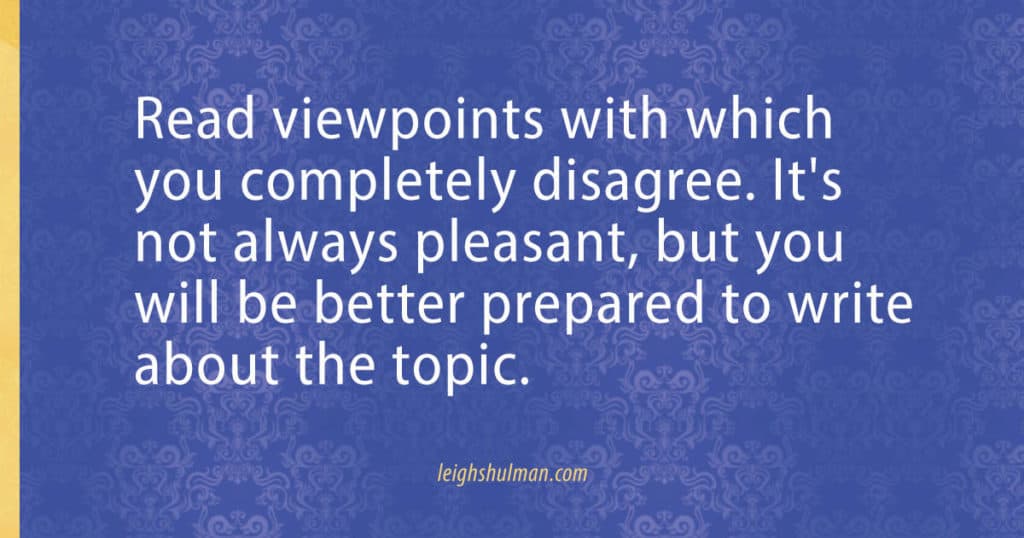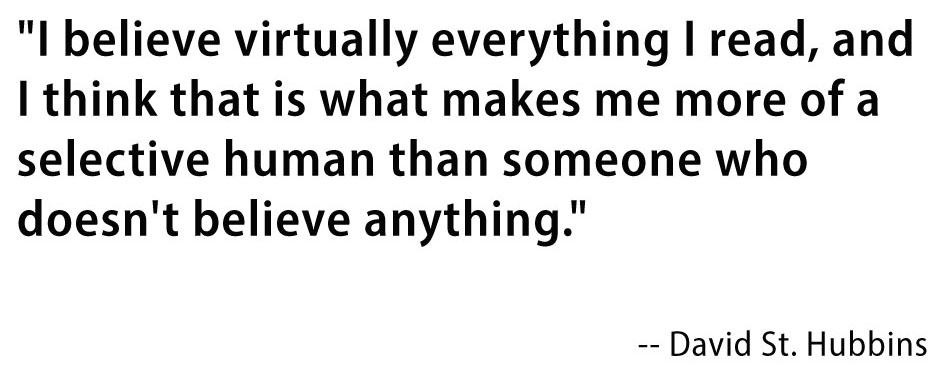
The Twin Towers dropped in a massive brooding cloud of dust over New York City. As the scorched remains rained down on the roof of our building, I picked up a burnt piece. It looked like it was once a contract of some kind. A surprisingly mundane detail of someone’s life. A guy in Manhattan found a piece of Madonna contract and later sold it for a lot of money.
The day of the attack, writers and journalists had no time to process events. People simply reported what they saw as they saw it. I’ve never heard reporters so raw and unfiltered. It took a few days, though, before news channels regrouped, creating news intros with flashing stars and red, white and blue flags flying. That’s when the spin began.
At the time, I taught composition and literature at a university in mid-Manhattan. All transportation shut down, so I couldn’t go to class. Questionable news reports flowed in, most of it terrifying. My students messaged me asking questions I couldn’t answer.
Who did this? What happens next? Why did my best friend’s sister die?
The World Trade Center attack marks one of the first times regular people on the street captured a major news event on their phones and video cameras. Anyone could become a source. Anyone could publish a story online, and suddenly checking the validity of those sources, which was never easy, became infinitely more difficult.
“A friend of my mom teaches at a public school and she said no Muslim children showed up to school on 9/11,” one student told me.
“How do you know that’s true?” I questioned her.
Did she hear directly from the students or the teacher? No. Then I shared with her the rumor I’d heard. “No Jews went to work at the World Trade Center that morning either.” Apparently, we Jews knew about the attack beforehand and stayed away.
“That’s ridiculous,” the class cried. The sister of one of my Jewish students died in the towers. “No one warned her.”
“So why would you believe another huge group of people was warned?” I challenged them.
Do you believe the story I just told you?
(I’ll come back to that question later. For now, read on.)

Fear pushes you to believe the irrational
Fear fuels much of the media we absorb. Why? Because it motivates us to action by eliminating doubt. When we’re scared, we act. Fight or flight. We tune in, turn on, buy and repeat what we hear because we believe the news will inform us. The problem with spurring people on with fear, though, is fear leads to horrible decisions.
“Psychologists have been studying the art of decision making for centuries…. Because the pervasive take away from much of this work is that human beings are pretty bad at making good (or, at least, rational) decisions when faced with risk. We are terrible at calculating the actual probabilities of specific outcomes. We hate ambiguity to the point where we just pretend it doesn’t exist,” says Kayt Sukel in her book The Art of Risk.
The days after 9/11 were rife with ambiguity. Which way do you run when someone yells “There’s a bomb in the Empire State building”? Where do you turn for help when no one knows what’s going on?
“We hate ambiguity to the point where we just pretend it doesn’t exist.”
What better way to use class time than to read and analyze our way out of that ambiguity? So I threw out my literature curriculum and focused on the news.
Is the narrator reliable? Are your sources credible? How do you construct an argument?
This has been a staple of my teaching ever since. My personal Bullshit-o-Meter pings hard when something doesn’t seem right. That pinging tells me to look deeper. Now that we’ve entered the murky realm of fake news, my poor B-o-M can’t believe what it’s seeing. Truth has become a mutable object, and thus the need to fully analyze information before swallowing is even more important.
I wrote this thirteen-step guide based on years of teaching. These 13-steps help you ask questions before believing a source, and you can apply them when writing research papers, dissertations, journalism, book writing and even what you post on social media. Throughout the guide, I raise issues and concerns that you have to answer for yourself.
You must decide what you believe and how you can most effectively and accurately present your ideas.
Are you reading a primary source or a secondary source?
First, let’s parse the difference between the two.
A primary source is first-hand information about an event, person or object. This can include eye-witness accounts, legal documents, historical documents, video, audio, images and other original texts. A secondary source is anything produced after that event, person, or object. The secondary source explains, contextualizes or discusses the primary source.
Primary sources: The Bible. James Joyce’s Ulysses. Eyewitness account of the World Trade Center collapse.Secondary sources: Rambam’s commentary on the Bible. a television documentary of Joyce’s Dublin, a book about WTC survivors.
Since the primary source gives you direct information, it will always be more reliable than the secondary source that analyzes the primary.
In October 2016, David Corn published a piece in Mother Jones about a secret dossier an anonymous source compiled on Donald Trump. Corn analyzes the Trump dossier for us by placing it in a larger context. He knows the original source. We don’t. Corn explains the meaning of the dossier and its potential impact on our government.
Buzzfeed published the entire dossier. Buzzfeed allowed us to read and see the primary source for ourselves, offering the ability to make our own decisions about its content. Something, many seasoned journalists feel was absolutely ridiculous to do.
Erik Wemple, in his Washington Post column, believes that Americans can only make our own decisions if they “build their own intelligence agencies, with a heavy concentration of operatives in Russia and Eastern Europe.”
In response to criticism of publishing the dossier, Buzzfeed editor Ben Smith says:
Publishing this document was not an easy or simple call, and people of good will may disagree with our choice. But publishing this dossier reflects how we see the job of reporters in 2017.
How we see the job of reporters in 2017. That I believe is the operative phrase. We’ve moved into an era in which anyone can publish, anyone can report what they observe. Perhaps instead of shielding the public from potentially incorrect sources, we should allow for Buzzfeed’s brazen openness.
Whether or not we have the ability to fully evaluate a primary source, do we nonetheless have the right to see it?
If you can’t access the primary source, analyze your secondary source to see if it’s believable.
When you can’t access the original source, then you must rely on the reputation of the secondary source.
Going back to David Corn’s Mother Jones article. Without a name to place with the dossier, where do we look to decide the legitimacy of the source? The author, after all, could be lying.
That’s when you move to the next level. David Corn, does he have a history of solid reporting? Is Mother Jones known for publishing quality content and engaging in issues without purposefully manipulating the audience?
You can read Corn’s articles, books and also see what he says and does on social media. The same applies to most writers. All of this information will help you make a decision.
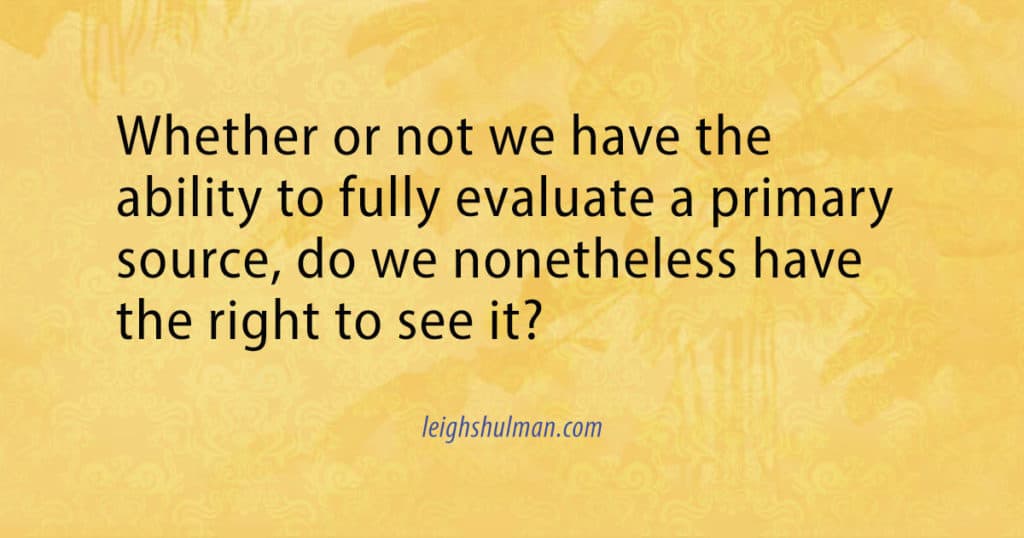
Are your sources opinion or fact?
A fact exists whether or not you believe it, like it or know it. Facts remain true no matter who you are, where you live or what political affiliations you hold. It is a truth and can be verified as such. Opinions are what you believe, but they cannot be applied to everyone. It cannot be proven to be true, no matter how many people agree with you.
These are opinions:
Lindsay Graham is an idiot.
Apple Jacks cereal is the best part of breakfast?
Orange is the worst juice.
These are facts:
Lindsay Graham served as a US State Senator from South Carolina since 2003.
Apple Jacks cereal contains 12 grams of sugar per one cup serving.
Orange juice comes from oranges.
A fact is verifiable and can be proven.
When writing about opinion versus fact, be precise when paraphrasing or use direct quotes whenever possible to differentiate between fact and opinion. Facts, however, can be used strategically to support and illustrate your opinions and beliefs.
Don’t just accept your sources as you read them. Research and verify them for yourself.
I warn you now, this is a rabbit hole. You check one source and then to check the facts of that source you have to read other sources and evaluate them for accuracy. This is the work we have to do if we want to protect truth and publish reliable writing.
I find, often, it is impossible to fully verify facts.
Do I know for certain that the 15 of the 9/11 hijackers were actually from Saudi Arabia? I read it in the news from multiple sources. I saw their profiles and photos. No one has ever come forward to say they are not from Saudi Arabia. I have every reason to believe that this fact is indeed true.
But is it possible I’m receiving false information from all the various sources? Yes. Not probable but possible.
You have to decide for yourself whether or not your research adequately proves your facts and then use those facts properly to create an argument.
Which brings me to my next point.
Make sure your arguments are sound.
Succinctly put, a sound argument is one that the premises are true and those premises lead directly to your conclusion.
Premise one: Experience in the business world is not the same as experience in the political arena.
Premise two: Trump has no political experience prior to becoming president.
Conclusion: Trump’s business dealings are not prior experience for the job of president.
You can use your arguments to support your opinions as well.
Premise one: Trump did not include Saudi Arabia in his list of countries in his travel ban.
Premise two: Saudi Arabians were involved in previous terror attacks on the United States.
Premise three: The travel ban is intended to protect the United States from terror attacks.
Conclusion: Trump’s travel ban is simply an excuse to make people fear Muslims even more while protecting other Muslim countries that do business with the United States.
Oh, and there are so many ways an argument can go astray.
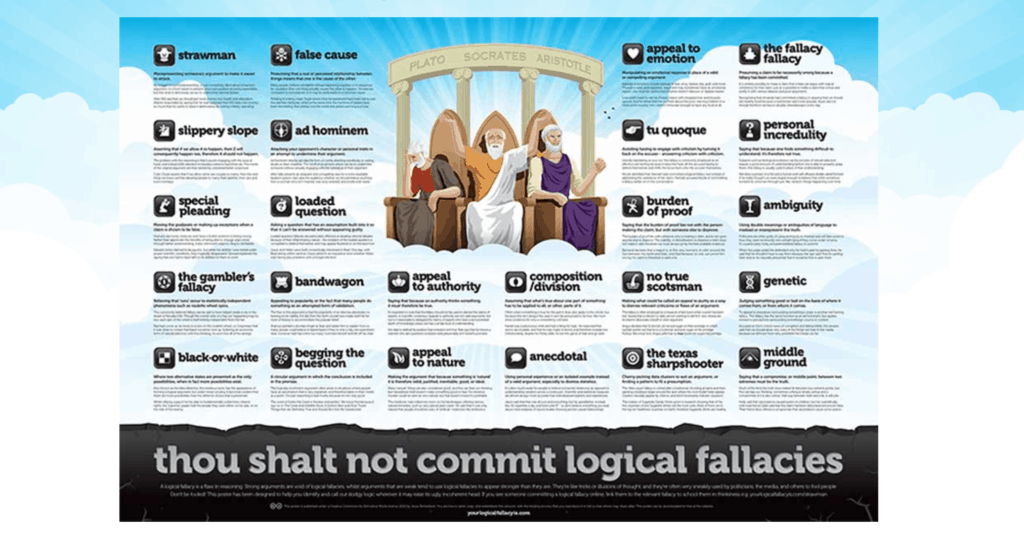 (This poster, by the way, from Your Logical Fallacy Is.)
(This poster, by the way, from Your Logical Fallacy Is.)
Recognize and avoid anonymous sources when at all possible.
Always be suspicious of sources that won’t put a name to what they say. When we don’t know who they are, what they believe or where their allegiances lie, it’s impossible to ascertain the value of the information they share. Anonymous allows journalists like Jayson Blair to pretend they have a story when they don’t.
So why do so many news outlets allow them?
Because people who are willing to tell reporters interesting things—that is, confidential or disturbing information or opinions—are usually disinclined to appear to be the candid plain talkers or snitches or whistle-blowers or gossips or backstabbers they are.
— Kurt Anderson in his NY Magazine piece, Welcome to the Sausage Factory
Often, anonymous sources arrive clothed in language designed to inspire confidence in that source.
- A person close to the administration.
- A person familiar with the situation.
- A senior White House official.
- Justice Department official.
On and on, you get the idea. When a writer doesn’t let you know where they got their information, there is no way for you to vet it. You can only trust the writer as a secondary source of information.
Check out this Anonymous Source Tracker to see just how pervasive these non-cited sources can be in all media from conservative to liberal. It’s easy to overlook.
Watch out for unproven or unreliable information.
Sometimes anonymous comes in the form of information without actual mention of a source.
A Huffington Post article claimed the Trump administration will “scuttle a rule protecting retirees from being scammed out of $17 billion a year by their own financial advisers.” The article obliquely mentions that the “Obama administration calculated” how much retirees stand to lose without this protection. What do you mean they calculated?
There are times we include information in our posts without citing its origin because the information falls under common knowledge, that is, facts that a generally educated audience would know. Twelve inches in a foot. The molecular structure of water is H2O. Barack Obama is the 44th president of the United States.
As a general rule, anything you’re required to cite in research to avoid plagiarism, you would do well to support with sources in your writing.
The Obama White House report would not be considered common knowledge and in order to be fully informed, we need more information. Does the study conducted by the Obama administration clearly show that the Trump administration would harm retirees by doing away with this rule?
It took a bit of digging, but I found a link to a study conducted by the Obama administration to see what kind of effect this law would have. Since I’m not an expert in finance, retirement or how government works, I’m not sure my analysis would be particularly useful when it comes to this report. I need someone to explain it to me.
I found two secondary sources for more detail.
2. An overview of the study on Obama’s White House site.
3. A review of the study from Nera Economic Consulting firm.
The NERA study states called the study “flawed in multiple ways. Firstly, while it is true that the cited academic literature claims to find evidence of conflicts of interest between brokers and investors, a careful read of the academic literature suggests a more nuanced and complex set of findings than the simple claim of a 1% loss in annual returns.”
NERA. The White House under Obama. Huffington Post. Which is more reliable?
If NERA is correct, then changing the law may not really matter. If retirees benefit in other ways from these conflicted investments, then it may not matter. If what the Huffington Post and the Obama White House say is correct, and Trump is indeed scamming retirees and handing the money to Wall Street as the Huffington Post says, then clearly it matters very much.
Be very wary of publications who regularly fail to cite their sources to back up their facts and figures.
Know the political slant of your sources
A publication’s political preferences don’t disqualify it from reliability, but political opinion will dictate the angle of their articles and the topics they choose to cover. This muddies the water when separating fact from opinion.
CASE STUDY: See the difference in coverage of the same law by these two outlets.
Vox: Congress is repealing a rule that makes it harder for people with mental illness to buy a gun
National Review: No, the GOP did not just repeal the background check system or give guns to the mentally ill.
These two articles were published the same day. Both give a general overview of the initial law, the repeal and why it’s problematic. Both include that both the NRA and the ACLU stand against the rule. The Vox articles points out the law affects a relatively small group of people — only 75,000 — which is a drop in the bucket of gun sales in the US.
If you lean liberal as Vox does, you likely believe that loose gun laws and a too powerful NRA allow people who should not own guns to buy and use them without a background check. In which case, you may well be appalled when Congress repeals a rule giving people with particular mental illnesses access to guns.
If you’re a hunter and strongly support the Second Amendment, you’re likely to applaud the same rule.
In my opinion, the Vox piece remains more neutral. It gives the facts as well as opens a discussion about how lawmakers could address the problematic aspects of the rule without repealing it altogether.
The National Review uses loaded language. The title suggests people are complaining about a rule that repealed ALL background checks plus literally gives guns to the mentally ill. No, National Review, the GOP didn’t do that. No one accused them of doing those things. Congress did, however, make it easier for people with a history of mental impairment to purchase and own guns, flying directly in the face of gun control advocacy.
When you spend too much time reading one political point of view, your writing slants in that direction. Read viewpoints with which you completely disagree. It’s not always pleasant, but you will be better prepared to write about the topic.
Are you being swayed by emotional or coded language?
When a publication refers to Trump’s recent executive order as a travel ban, you know it is more likely to be neutral or pro the order. When they say Muslim ban, it is more likely to against the order.
You can generally tell the viewpoint of a source by the words they use. Israeli Occupation. Pro-Abortion. Muslim terrorist. Mainstream media or MSM (everyone else just calls it media). These terms will quickly inform you of potential political slant.
Verbs hint to an agenda as well.
Trump destroys gun law
vs
Trump repeals gun law.
Trump’s just halted a major rule about retirement advice
vs
Trump’s rollback of the investment conflict-of-interest rule directly attacks middle-class savings.
Yes, emotion creates a far more interesting story, but it also makes it harder to evaluate a situation for ourselves. If a piece of writing evokes an emotion when you read it, note that. Do you feel fearful, anxious, angry? It’s likely the text uses words designed to trigger your emotions. And while emotional words make for far more engaging copy, they also aim to manipulate.
Strip away the emotional words to dig into the message below.
Does the news outlet have a history of being reliable?
Obviously, this is tricky. Just because a news outlet has written well in the past doesn’t mean every article, every reporter, every word from them can be trusted. Nonetheless, it can still guide us as we make decisions.
One can generally assume that major news outlets won’t completely fabricate verifiable information. Or if in doubt, you can research to hear other points of view on topic or detail. Yes, sometimes, even the most reputable news sources make mistakes.
How do you know who to believe now that everyone on the internet can have his or her own opinion and anywhere?
Again, see where they come from. Who are they? What is their background. Do they have experience? What is their political leaning and does that political leaning push to an agenda?
Over time, you’ll see a pattern of publications and sources that publish reliable information.
Note when was the article or book written.
This one often trips me up.
Stale information undercuts the point you’re trying to make.
In 1999, Donald Trump went on record to say he is pro-choice, pro-same sex marriage and pro gays in the military. That information was used by people to say that his laws as president would not reflect the anti-gay, anti-Muslim, anti-abortion message of his campaign.
This happens often on social media. Someone posts a news article that seems to relate to a current event. The article adds a dimension to the current event that worries people when in reality, there’s no connection between the two. It’s distracting and misleading.
Verify direct quotes with your primary sources.
When I lived in Israel, a woman attending my school died after a night out drinking. Everyone was shocked. We didn’t know how to react, so we talked among ourselves. Turns out, a woman among us was actually a reporter, and the next day, a quote attributed to me appeared in the paper. “Lies. Lies. It’s all lies.”
I never said that.
Some more recent examples.
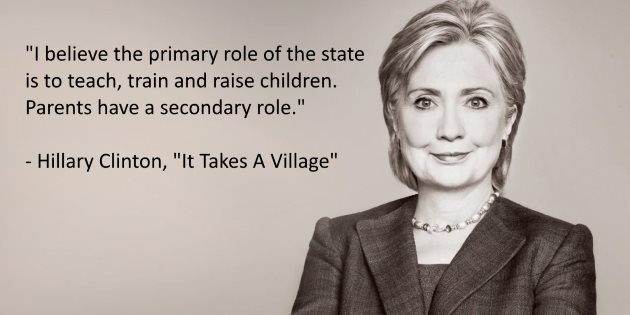
Not true. She never said this. You can google the actual quote. This is changed and completely taken out of context.
Also not true. President Donald never said this.

We all have a bias to reinforce what we already believe. While I may not like everything about Hillary Clinton, I do admire what she says about parenting and raising children. So when I saw this quote, I immediately knew she never for a moment said parents have a secondary role in their children’s lives. I didn’t want her to have said something that goes so fully against my beliefs, thus I checked.
I wasn’t surprised about the Trump quote, nor does it change my view of him. So I didn’t bother verifying it when I first saw it.
The Donald Trump image, though. I had a different reaction. I am not Trump supporter and I vehemently stand against the divisive rhetoric he said during the campaign as well as his actions and orders now. It wasn’t out of the realm of possibility for him to say this. He has said far more outrageous things.
In both cases, it took only a quick search to find out neither is true.
Don’t be fooled by a misplaced context (that change the meaning of your sources)
It is too easy to fall into the trap of personal bias. Double check the photos and quotes you see plastered online as memes. They are often completely false. Also, check quotes for context.

I saw this Morgan Freeman image on Twitter in the feed of a Trump supporter with the #MAGA hashtag. This graphic suggests Freeman supports Trump, yet Morgan Freeman endorsed Hillary during the campaign and even read the voice overs for some ad spots. He’s been pretty clear that he is not a Trump supporter.
He might hope that Trump will be a good president — as I think many of us wish — but that doesn’t automatically mean he supports Trump’s actions as president.
And just as an image and quote can create a false context, audio and video can be even further manipulated to create a reality that isn’t true.
Take the recent video of Trump speaking to NATO leaders in Europe. I’ve seen the following headlines related to his speech.
Trump was the laughingstock of NATO
NATO leaders caught laughing at Trump.
NATO leaders laugh as Trump shows he has no idea how NATO works.
Now watch the video. You’ll see the various leaders talking and laughing while audio of Trump speaking plays.
We have no idea what the various European leaders said to each other. We don’t know why they were laughing. We don’t even know if the audio of Trump and video of Macron et al occurred simultaneously. The video was obviously edited together from different recordings, and could easily be manipulated.
Yet somehow, people connected dots to create the specific reality they wanted to create.
Once you start looking for it, you’ll find many examples of juxtaposed text and media intended to suggest a story that may not actually be there. These cobbled together stories distract us from what we need to know.
Now, it’s your turn.
I asked earlier if you believe my story of 9/11? Well, what do you think? Do you trust me? Why or why not?
Maybe you’re reading this because you already know me, so you can use your personal experiences with me to make that decision. Maybe this post is the first you’ve heard of me. How will you decide whether or not I’m telling the truth trying to fool you?
I’ll tell you what I advise my students, clients and anyone who has every attended a workshop with me. Trust your instincts. As you read and recognize real from fake, you’ll notice your own bullshit-o-meter pinging, saying “What? That doesn’t make sense.” Trust it. Trust yourself. Then read more, research and dig deeper until you land on (or at least near) the truth.

